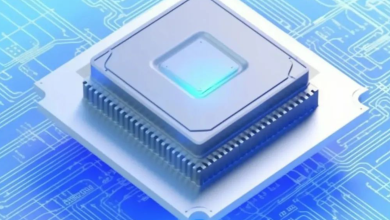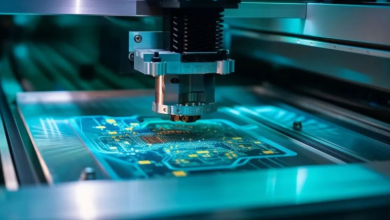How Laser Tube Cutting Machines Improve Precision in Modern Manufacturing
Introduction: The Growing Need for Precision in Manufacturing
As manufacturing advances toward higher quality and efficiency, the demand for precise processing continues to grow. Traditional cutting methods often fall short when handling complex tube components, limiting product quality and production speed. Laser tube cutting technology, with its high precision, fast operation, and automation capabilities, has become an essential tool in modern manufacturing—enabling businesses to achieve accurate cuts, improve product competitiveness, and elevate overall manufacturing standards.
How Laser Tube Cutting Machines Work: Technology Behind the Precision
Laser tube cutting machines utilize advanced laser technology combined with precise computer numerical control (CNC) systems to deliver highly accurate cuts on various tubular materials. At the core of these machines is a focused laser beam, typically generated by fiber or CO2 lasers, which emits concentrated light energy onto the surface of the tube. This energy heats, melts, or vaporizes the material along the cutting path, allowing for clean and precise separation without physical contact.
The precision of laser tube cutting machines comes from several key technological features. First, the CNC system controls the movement of the tube and the laser head with extreme accuracy, often down to microns. This digital control ensures that the laser follows the exact programmed cutting path, enabling complex shapes and fine details to be achieved with minimal error.
Second, the laser beam’s fine focal point allows for narrow kerf widths (the width of the cut), which reduces material waste and creates smoother edges that require less post-processing. Additionally, the non-contact nature of the process means there is minimal mechanical stress or deformation on the tube, preserving its structural integrity.
Modern laser tube cutting machines often incorporate automated loading and unloading systems, real-time monitoring, and adaptive controls to optimize cutting parameters such as speed, power, and focus. These innovations further enhance cutting quality and repeatability, making laser tube cutting an indispensable technology for industries demanding high precision and efficiency.
Key Advantages of Laser Tube Cutting Machines in Ensuring Precision
Laser tube cutting machines offer several key advantages that ensure exceptional precision in modern manufacturing.
Firstly, their high level of automation and digital control enables consistent and accurate cutting. Using advanced CNC (Computer Numerical Control) systems, these machines precisely control the movement of both the laser head and the tube, following complex cutting paths with micron-level accuracy. This automation minimizes human error and guarantees repeatability across production batches.
Secondly, the non-contact cutting process significantly reduces deformation. Unlike traditional mechanical cutting methods that exert physical force on the material, laser cutting uses a focused light beam to vaporize or melt the material without touching it. This eliminates mechanical stress, preserving the tube’s original shape and structural integrity, which is critical for components requiring tight tolerances.
Thirdly, the extremely fine laser beam allows for highly detailed and delicate cuts. The narrow kerf width (cut width) not only reduces material waste but also creates smooth edges that often require little to no post-processing. This fine beam quality is essential for manufacturing parts with intricate designs and tight specifications.
Lastly, laser tube cutting machines provide multi-angle and multi-directional cutting capabilities. The laser head and tube can be rotated and tilted, enabling complex geometries and precise cuts on multiple surfaces in a single setup. This flexibility enhances efficiency and reduces the need for additional machining steps.
Together, these advantages make laser tube cutting machines an indispensable tool for achieving high-precision manufacturing results.
Applications of Precision Laser Tube Cutting in Modern Industries
Precision laser tube cutting technology has become an essential component across various modern industries, delivering unmatched accuracy and efficiency. In the automotive industry, laser cutting is widely used to manufacture complex tubular components such as exhaust systems, roll cages, and structural frames. The high precision ensures parts fit perfectly, improving vehicle safety and performance while reducing assembly time.
In the aerospace sector, where tight tolerances and material integrity are critical, laser tube cutting enables the production of lightweight yet strong components like hydraulic lines, engine parts, and airframe structures. The non-contact process maintains material properties and reduces the risk of warping, which is vital for ensuring the safety and reliability of aircraft.
The furniture industry benefits from laser cutting by creating intricate designs on metal tubes used in chairs, tables, and decorative frameworks. Precision cutting allows manufacturers to produce custom shapes and fine details with minimal waste, enabling both aesthetic appeal and structural stability.
In the medical device field, laser tube cutting is employed to fabricate surgical instruments, implants, and specialized tubing. The technology’s ability to deliver clean, precise cuts on small and delicate parts improves product quality and patient safety, meeting stringent healthcare standards.
Overall, the versatility and precision of laser tube cutting machines help these industries achieve higher quality products, streamline production, and reduce costs—making the technology indispensable in today’s manufacturing landscape.
Conclusion: Future Trends and the Role of Laser Tube Cutting in Manufacturing
As laser tube cutting technology continues to advance, manufacturers not only benefit from improved precision and efficiency but also face important decisions regarding the investment involved. Understanding the tube laser cost and evaluating its return on investment are critical steps for businesses planning to integrate this technology into their production lines. Careful cost analysis ensures that companies maximize value while adopting cutting-edge solutions.




